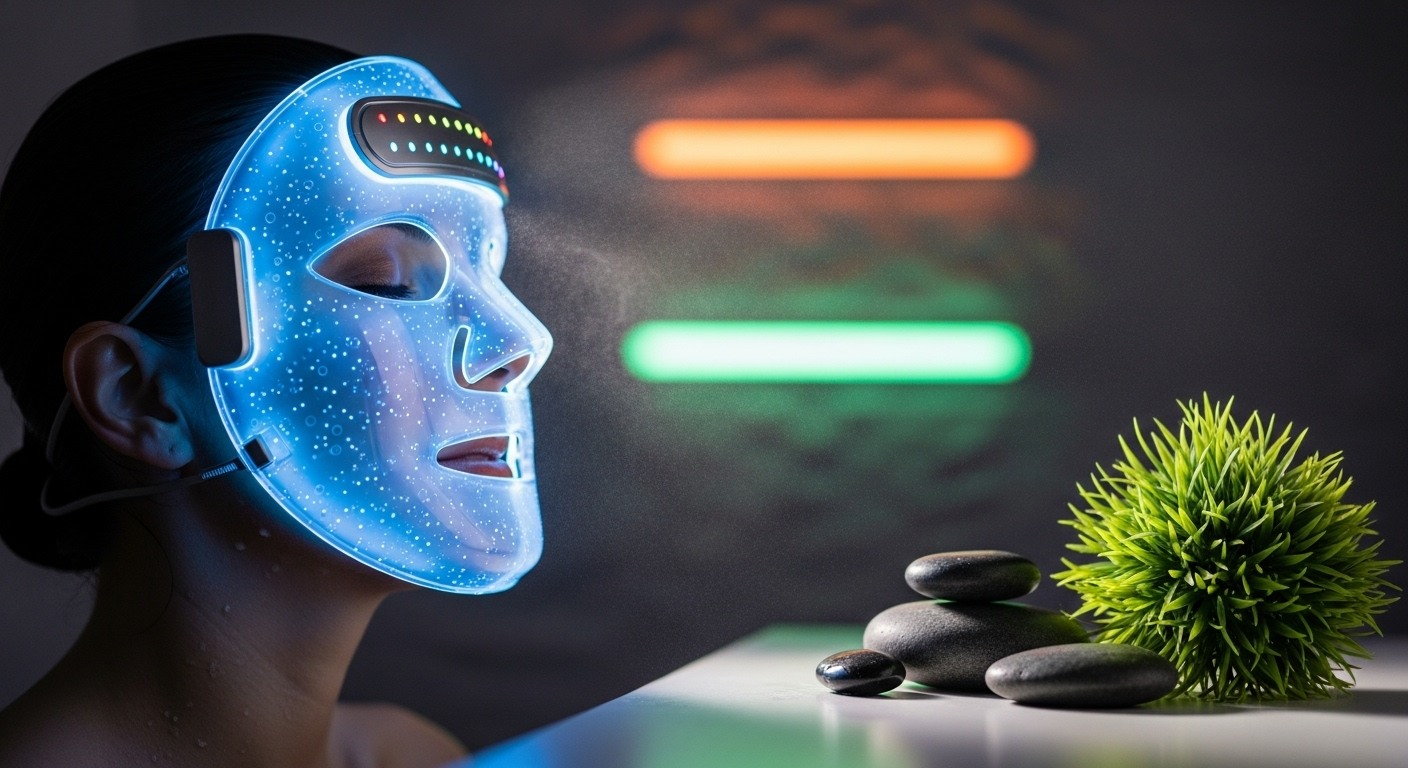Chromotherapy: The Spectrum of Wellness
In the ever-evolving landscape of beauty and fitness, a captivating approach to holistic well-being is gaining momentum: chromotherapy. This innovative practice, also known as color therapy, harnesses the power of different hues to promote physical and emotional balance. Rooted in ancient healing traditions yet backed by modern scientific research, chromotherapy offers a unique blend of aesthetic appeal and therapeutic potential. As the wellness industry continues to embrace unconventional methods, chromotherapy stands out as a vibrant and versatile tool for enhancing both inner and outer radiance.

In the modern era, chromotherapy gained scientific attention in the late 19th century when Dr. Edwin Babbitt published his groundbreaking work, “The Principles of Light and Color.” This sparked a renewed interest in the potential healing properties of different wavelengths of light. Throughout the 20th century, researchers continued to explore the physiological and psychological effects of color exposure, laying the groundwork for chromotherapy’s integration into contemporary wellness practices.
The Science Behind Color’s Impact
While skeptics may dismiss chromotherapy as pseudoscience, a growing body of research suggests that color can indeed influence our physical and mental states. Studies have shown that exposure to different colors can affect heart rate, blood pressure, and even hormone production. For example, blue light has been found to suppress melatonin production, influencing sleep patterns, while red light may stimulate alertness and energy.
The psychological impact of color is well-documented in fields such as marketing and design. In the context of wellness, these effects are being harnessed to create environments and experiences that promote relaxation, focus, or vitality. Neurologists and psychologists are particularly interested in how color perception affects mood and cognitive function, opening up new avenues for treating conditions like seasonal affective disorder and anxiety.
Chromotherapy in Modern Beauty Treatments
The beauty industry has eagerly embraced chromotherapy, incorporating it into a wide range of products and services. LED light therapy masks have become a staple in many skincare routines, with different colors targeting specific concerns. Red light is often used for anti-aging treatments, stimulating collagen production and reducing the appearance of fine lines. Blue light, with its antibacterial properties, is popular for acne-prone skin.
High-end spas and wellness centers are taking chromotherapy to the next level with immersive color experiences. Chromotherapy saunas combine the detoxifying effects of heat with the mood-altering properties of colored light. Some facilities offer color-themed treatment rooms, where every aspect of the environment – from the walls to the linens – is coordinated to enhance the therapeutic effects of a particular hue.
Fitness in Full Color
The fitness world is also exploring the potential of chromotherapy to enhance workout experiences and results. Innovative gyms are installing color-changing LED systems in their studios, allowing instructors to tailor the ambiance to different phases of a workout. A high-energy HIIT class might feature pulsing reds and oranges to boost motivation, while a yoga session could utilize soothing blues and purples to promote relaxation and mindfulness.
Wearable technology is incorporating chromotherapy principles as well. Some smartwatches now include features that use colored light pulses to guide breathing exercises or enhance meditation practices. As the lines between fitness and overall wellness continue to blur, we can expect to see more integration of chromotherapy into both home and commercial exercise spaces.
The Future of Chromatic Wellness
As chromotherapy gains traction in the mainstream wellness industry, researchers and innovators are exploring new applications and refining existing techniques. One promising area of development is the combination of chromotherapy with other sensory experiences, such as sound and scent, to create multi-dimensional wellness environments. These immersive spaces could offer personalized healing experiences tailored to individual needs and preferences.
In the realm of skincare, scientists are investigating how different wavelengths of light interact with specific ingredients to enhance their efficacy. This could lead to a new generation of “smart” beauty products that activate or change properties when exposed to particular colors of light.
The integration of chromotherapy into everyday life is also on the horizon. From color-changing “smart” windows in homes and offices to chromatherapeutic lighting systems in public spaces, the potential for using color to improve well-being on a broader scale is vast. As our understanding of the complex relationship between light, color, and human biology deepens, chromotherapy may become an integral part of how we approach health and wellness in the future.
As with any emerging wellness trend, it’s important to approach chromotherapy with a balanced perspective. While the potential benefits are exciting, more research is needed to fully understand the long-term effects and optimal applications of color therapy. Nonetheless, the vibrant world of chromotherapy offers a fascinating glimpse into the future of beauty and fitness – one where the spectrum of wellness is as diverse and dynamic as the colors of the rainbow itself.





